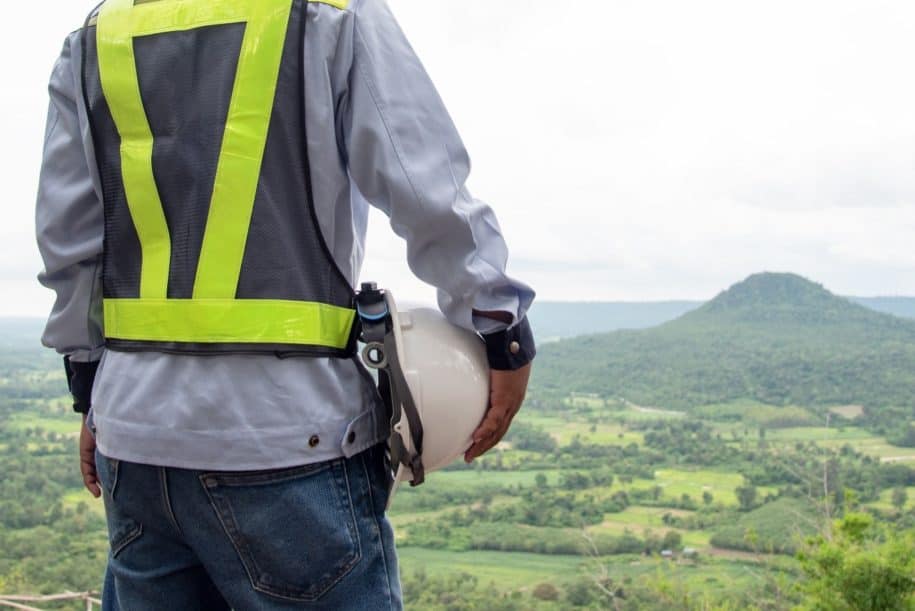When a new project is conceptualized it must undergo several planning stages. One of these stages is the Environmental Assessment phase, which is initiated before the project can be approved. Some common concerns arise during an environmental assessment, although each project will have site-specific environmental impacts and concerns.
What is an environmental assessment?
An environmental assessment (EA), or environmental impact assessment (EIA), is a process of evaluating the consequences that a plan, policy, project, or program could have on the environment into which it is being introduced.1 The intention behind environmental assessments is to enable the formulation of controls or other means of mitigating those impacts and the communication of these impacts to the public. This process is undertaken before the decision is ultimately made to proceed with a proposed project or action.
The following 5 concerns are the most common to appear during an environmental assessment:
1. Socio-Economic Impacts
The assessment of socio-economic impacts is an increasingly important aspect of EAs. Sustainable development does not only have an environmental role but an economic and social role as well. A holistic approach to an EA should be adopted, drawing a balance between economic, social, and environmental factors in decision-making. Understanding the socio-economic impacts of a project helps ensure the protection of connected communities and the local (and regional) economy. Socio-economic considerations extend beyond the direct economy to include housing, demographics, local services (such as the provision of water and refuse removal), and socio-cultural factors. 2 Any potentially adverse consequences of a project should be mitigated while enhancing the positive attributes. Without addressing the potential socio-economic issues surrounding a project, the decision-maker will not have a full picture of its contribution to sustainable development.
2. Impact on Vegetation
Depending on whether the development is proposed for a brownfield or greenfield site, vegetation may be impacted to a certain extent. 3 Brownfield sites are properties that may contain or affect a hazardous substance or other contaminant and are generally sites that have previously been developed. Greenfield sites are areas that have not been built upon and can be land in a city or rural area. Impacts on vegetation include the removal of indigenous vegetation (which could be classified as endangered, threatened, or vulnerable) as well as the introduction of alien vegetation species. An EA should therefore assess the impact that development would have on the vegetation at the site. If it is discovered that the project will have a significant adverse impact on endangered vegetation types or species of conservation concern,4 then mitigation efforts will be required. Such efforts could entail relocating the project site or translocating species of conservation concern to a nursery for replanting.
3. Impact on Water Resources
Whether or not there are water sources present on the proposed site, almost all development projects have an impact on freshwater resources. Developments should aim to use non-potable water resources during construction. If groundwater is sourced for the project, sustainability issues are likely to arise. For example, it will matter greatly if groundwater is readily available or a limited local resource, especially in the case that a project is delayed during the development stage. There is also always the possibility that new construction may contaminate the groundwater, which will impact the surrounding population. Additionally, surface run-off can pollute immediate or nearby surface water resources (e.g., lakes, rivers, creeks). A full consideration of these impacts would include a separate Freshwater Impact Assessment and investigation into the effect of the project on upstream and downstream users.
4. Construction-related Noise Pollution
Assessing the noise pollution of a proposed project starts with a measurement of ambient noise levels. A project located in the heart of the city with lots of surrounding ambient noise will not be as disruptive to the surrounding population as a project located in a rural area. Sensitive noise receptors (e.g., neighborhoods, schools, places of worship, etc.) need to be identified and impacts on these receptors should be assessed before a project can commence. The type of project will also play a role in the assessment. For example, the construction of a building will generate short-term noise pollution, whereas a landfill or a dam will entail noise past the point of construction into operation.
5. Visual Impact
Similar to noise, visual impacts will depend on the location of the project site and the project itself. To determine the visual impact of a development, the sense of place and sensitive receptors must first be identified. Erecting shade netting in an agricultural area will not have the same visual effect as developing an office complex along a scenic route. Visual impacts can only be mitigated to a certain extent. For example, if a project is found to have too extreme of a negative visual impact, measures could be taken to camouflage the construction by planting indigenous trees or the height of the proposed development could be lowered.
Environmental assessments are tools that can support project managers and authorities in deciding whether a project is feasible from an environmental and sustainability point of view. The goal of an EA is to assess the potential impacts of a project on the biophysical and socio-economic environment and mitigate or reduce any foreseeable negative impacts. By knowing potential concerns or issues that may arise during an EA before the project reaches the developmental stage, project managers can adapt where necessary to reduce any negative environmental impact.
Author Bio
The SafetyStratus Research Advisory Group (RAG) brings together thought leaders from the global environmental, health, and safety community to promote best practices and provide key insights in the profession and the industries they serve. The Research Advisory Group also advocates, where practical, the intersection of and advances with the use of technology, such as the SafetyStratus enterprise EHS software platform. Group membership consists of representatives from across varied disciplines and market sectors as well as select members of the SafetyStratus team.
The primary objectives of the SafetyStratus RAG partnership are to:
- Build a strategic partnership between EHS practitioners and the SafetyStratus team.
- Provide engaging and practical content to the global EHS community.
- Provide discipline and market feedback specific to SafetyStratus products and services.
While the objectives of the RAG are varied, the primary public-facing outcome will be available through engaging and practical content found on the SafetyStratus resource pages. Various articles, papers, and other valuable resources will be produced and shared as part of an ongoing effort to cultivate a robust community. Ultimately, the SafetyStratus RAG will expand to have a broader reach and provide opportunities for more inclusion by all interested EHS professionals in a collaborative community environment.
References
1 NPI. (2022). Environmental Assessment. National Preservation Institute. https://www.npi.org/environmental-assessment
2 Waterson, N. (2014, May 15). Socio-economic assessment and improving EIA. IEMA. https://transform.iema.net/article/socio-economic-assessment-and-improving-eia
3 EPA. (2022, May 4) Overview of EPA’s Brownfields Program. United States Environmental Protection Agency. https://www.epa.gov/brownfields/overview-epas-brownfields-program
4 U.S. Forest Service Pacific Southwest Region. (2016). Species of Conservation Concern
Frequently Asked Questions. USDA. https://www.fs.usda.gov/Internet/FSE_DOCUMENTS/fseprd507865.pdf



